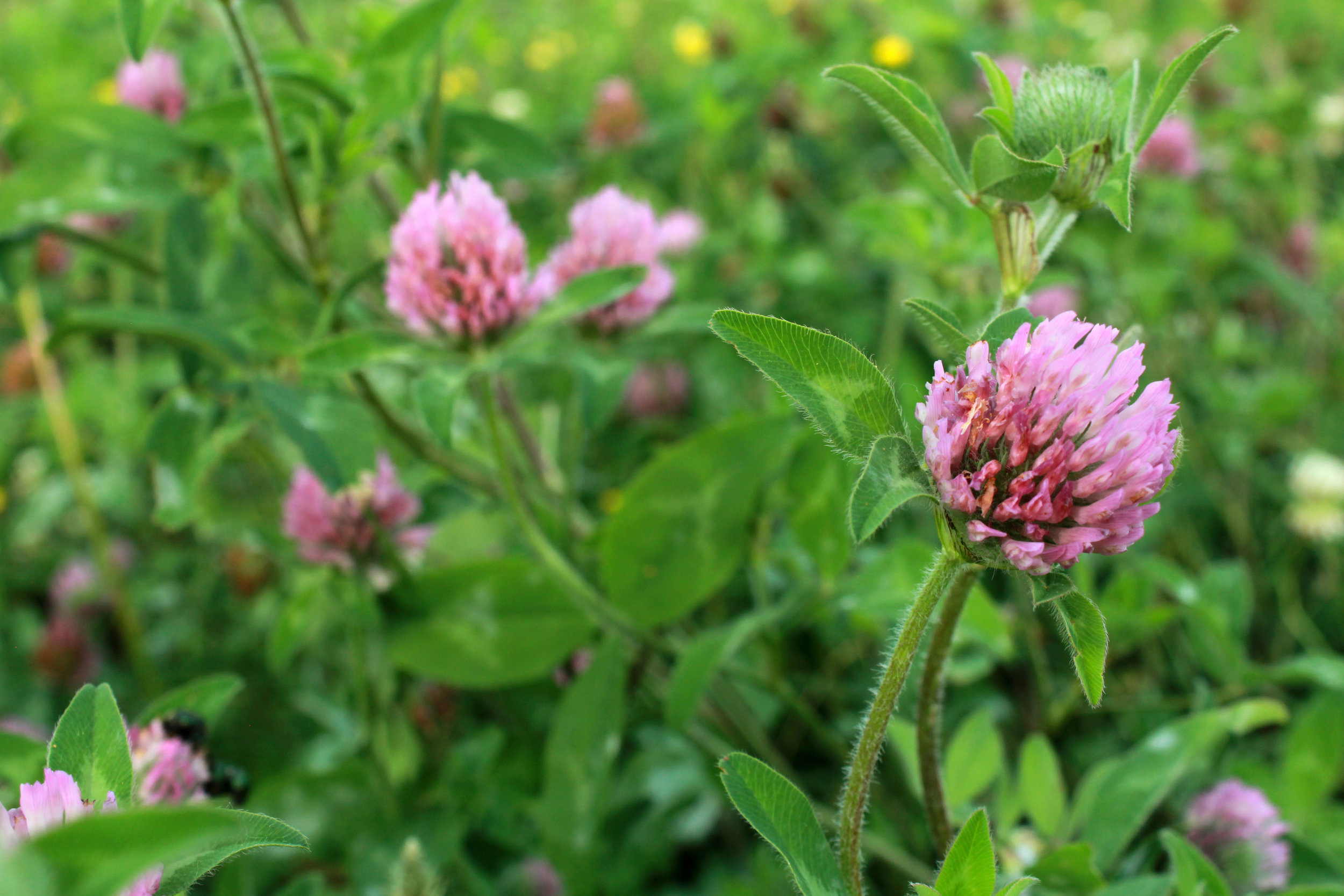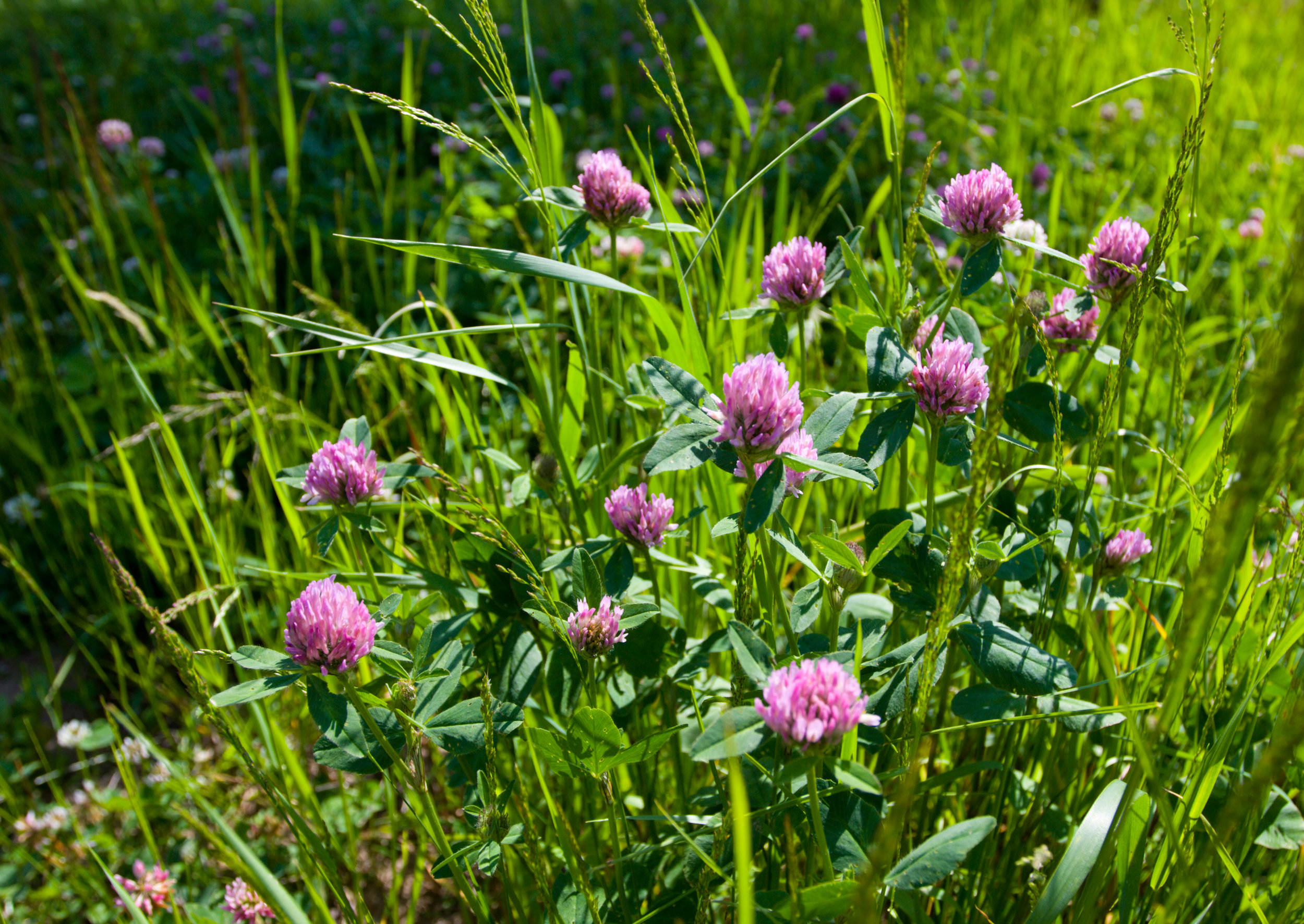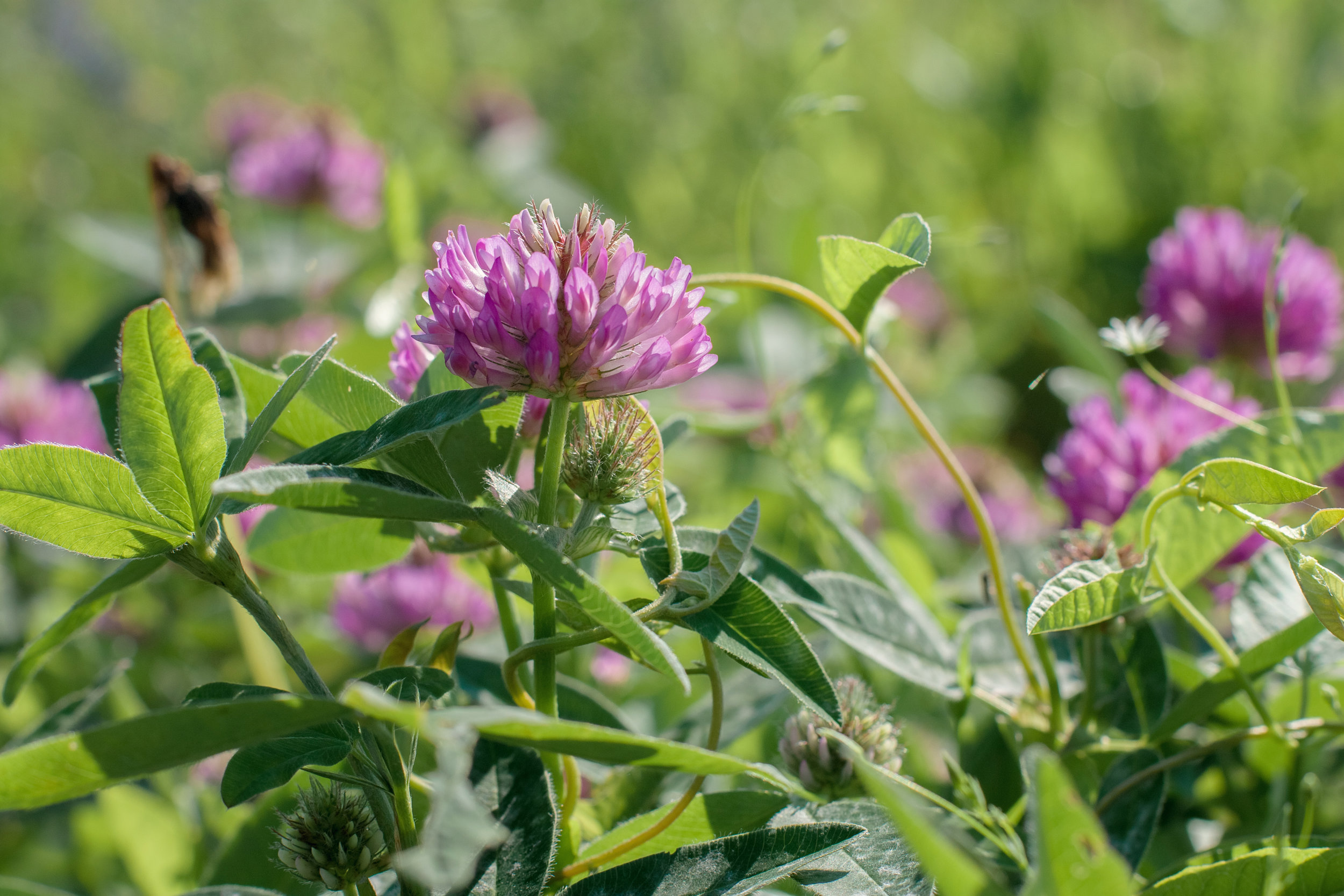Trifolium pratense (Red clover)
Popular nitrogen-fixing biennial or short-lived perennial legume with rose-pink flowers. Prefers heavy, well-drained soils but is tolerant of some poor drainage. More tolerant of moderate acidity than Alfalfa (Medicago sativa). Quick growing and easily established, tolerating moderate summer heat when adequate moisture is available. Widely used with forage grasses for hay, pasture and silage as well as for wildlife food plots and soil enhancement. Two forms: medium-types (double-cut) and mammoth-types (single-cut). Medium-types are most common, grow back quickly after cutting and are suited for multi-cut or grazing systems. Mammoth-types mature later, recover slower after cutting and are recommended for single-cut hay systems in areas with a short growing season or biennial plowdown applications. Pollinated by native bees and honeybees. State flower of Vermont. Varieties listed below.
DISTRIBUTION / ADAPTATION
INFORMATION & ATTRIBUTES
Family: Fabaceae
Duration: Biennial/Perennial
Growth Habit: Forb
Native Status: Introduced
Growth Form:
Mature Height: 24in. - 30in.
Bloom Color: Rose-pink
Bloom Period:
Annual Precipitation: in.
Drought Tolerance:
Shade Tolerance:
Fire Resistance:
Fire Tolerance:
Nitrogen fixation:
Bloat:
SOIL ADAPTATION
Coarse Texture:
Medium Texture:
Fine Texture:
Salinity Tolerance:
CaCO3 Tolerance:
pH Range:
SEEDING NOTES
Seeds per Pound:
Seeding Rate: lbs/acre
Season:
Days to Germination:
VARIETIES
Kenland - Medium-type (double-cut) with a superior forage yield over most other varieties; also longer-lived. Good resistance to southern anthracnose fungus and some resistance to crown and root rot. (Released 1947)





